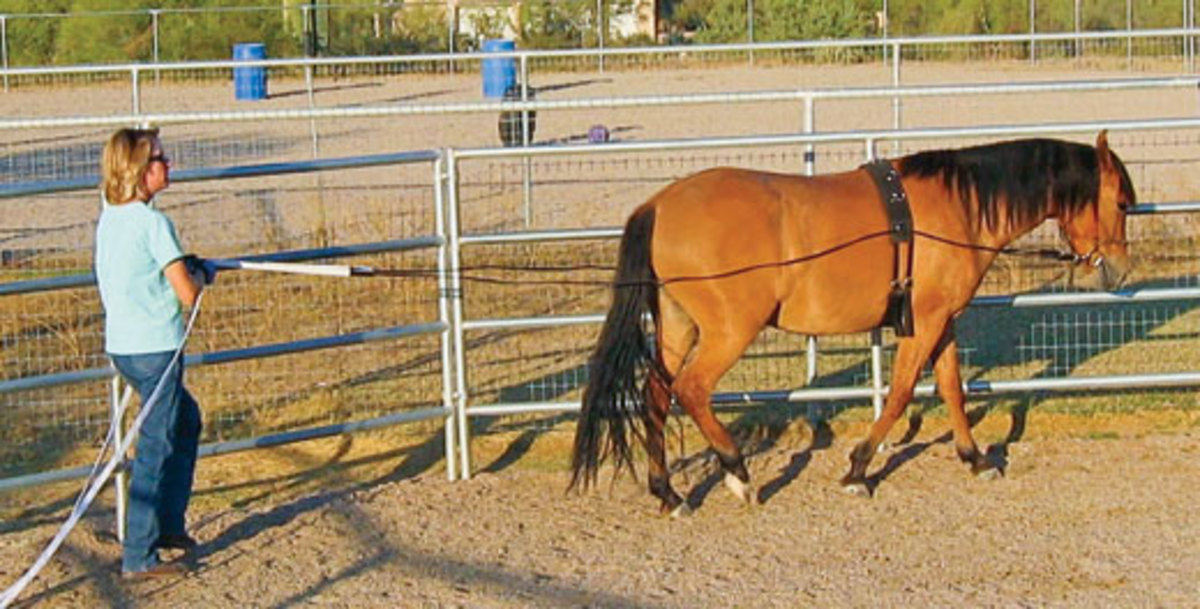
I sometimes have trouble controlling my hot, nervous Paso Fino mare, Natalie Bravo, on trail rides. She flings her head and neck while trying to break into a faster gait (the faster the better, in her opinion), especially on the way home. I’d tried several bits, hoping one would give me better control, but none of them has prevented her “let-me-go-faster” antics.
Natalie must need a different bit, I thought, so I called Doug Ford at Casa Dosa Tack (www.casadosa.com) for his advice. His response wasn’t what I expected. He told me Natalie needed more training in the arena, not a different trail bit.
With four horses at home, a 3-year-old gelding (Clementino) I’m training, and a fulltime job, I admit that I’m not giving Natalie the training time she requires and deserves. However, since talking to Ford, I’ve spent more time on Natalie in the arena.
Also, local horse trainer Amy Bourk brought over a variety of her bits to let me try on Natalie. We concluded that a simple mullen-mouth (solid, curved) bit, with Kimblewick (or Kimberwick) shanks (D-shaped rings) that provide a little leverage, was as good at stopping Natalie as a high-port curb bit (one with a solid mouthpiece with a high, raised portion) with long shanks that some Paso Finos and other gaited horses are traditionally ridden in.
Wise Choices
Many of us trail riders are prone to use the same saddles and bits that we learned to ride in or that came with our horses, rather than make good choices based on safety and comfort for ourselves and our mounts. As I’ve been learning about natural horsemanship training and riding techniques, I’m also trying to find out more about what makes a good trail-riding bit and a good trail-riding saddle.
In response to my article about saddles (“Boots and Saddles,” Cactus Country, The Trail Rider Magazine January/February ’08), reader Dolores Field kindly shared with me her DVD about bit and saddle fit. The DVD is available through Larry Whitesell, a gaited-horse clinician (931/858-0658; www.whitesellgaitedhorsemanship.com).
In the DVD, Whitesell explains the unique anatomy of the gaited horse, which typically has a shorter back and different back angles than a nongaited horse. He also explains why he recommends the New Freedom saddle sold by Casa Dosa Tack (888/454-3672; www.casadosa.com) for all gaited breeds.
I asked Whitesell to tell me more about his perspective on bits for trail riding. Like Ford, he said good horsemanship and horse training are the keys to happy trail riding. In his opinion, if a horse can’t be trail ridden in a snaffle bit, that horse doesn’t know enough to be trail ridden. Safety is paramount, he noted, and many trail horses aren’t well-trained.
Soft Cues
Whitesell prefers to trail ride in a snaffle bit (one that lacks shanks) or short-shanked grazing bit (one with a mullen mouth or low port). Shanks provide leverage, which multiplies the rein pressure; the longer the shank, the greater the pressure. Snaffles and short-shanked bits are gentler on a horse’s mouth. And the gentler the bit, the more a horse can relax, Whitesell says.
“I want the most comfortable bit I can possibly ride in. I don’t need my bit for control, only communication,” he emphasizes.
Whitesell defines an easy trail-riding bit as one that softly cues the horse. He advises against trail riding in a bit with a high port that rests on the bars of the horse’s mouth (that is, the interdental space, where no teeth grow), long shanks, or one that adds nose pressure to the horse’s bars, tongue, poll, and chin.
He believes a bit should be chosen according to the rider’s hands and horse-handling ability. Most inexperienced riders like “more bit” to feel safe, but this creates more anxiety in the horse.
“If the horse isn’t safe to ride in a snaffle, then he isn’t a horse for a green rider,” Whitesell notes. He says he only rides a horse on the trail after the horse has been thoroughly ground-broke in an arena.
“However, there’s nothing wrong with a bit with shanks if the horse and rider are both at that level,” Whitesell continues. “When trail riding, I’d rather not ride with a long shank, because the action of it – even on a loose rein – can become uncomfortable for the horse. Plus, the shanks can catch on brush.”
Whitesell adds that he doesn’t use a curb strap when trail riding in a snaffle bit, because it could get caught on something.

Bit Training
When a horse in training has progressed into the bit stage, Whitesell uses a snaffle bit or bosal (rawhide noseband), because they provide easy-to-understand lateral (side-to-side) cues for the young horse. When a horse is proficient with lateral bit tools, Whitesell may introduce a shanked bit to teach a horse vertical flexion (controlled up-and-down head movement).
A curb strap is an essential part of a shanked bit; Whitesell prefers to use a leather one, because a curb chain can sore the horse’s chin. He works trained horses in shanked bits in the arena; he rides them in snaffle bits on the trail.
Based on Larry Whitesell’s input, I’m striving to safely ride my horses in the least amount of bit that will give me adequate control on the trail, while I commit to their ongoing training.
I’ve started training my 3-year-old Paso Fino gelding, Clementino, to ground-drive in a snaffle bit without a curb strap, and I know Whitesell would approve. Next year, I’ll begin breaking Clementino to ride, starting out in a bosal or snaffle bit.
Thanks to a bit of advice, I’ll keep working on my horses’ training while avoiding overbearing bits on the trail.






